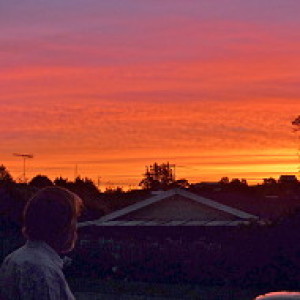A new forest begins
Two days ago I posted a photo of a mural in Kingsland, which showed regeneration from a fallen forest giant.
This morning on my run I went a little further out along the road on the ridge into the country side. At the point where I stopped to turn back, some large macrocarpa (also known as the Monterey Cypress; Cupressus macrocarpa) trees had been felled quite some time ago. Endemic to the central coast of California, it was introduced to New Zealand in the early days of Pakeha settlement as a shelter tree on farms (all the native trees had been felled and/or burned, leaving no trees to act either as a windbreak or as shade. In New Zealand the macrocarpa grows much larger than in California; up to 40 m tall and 3 m in trunk diameter.
Dismissed as a serious timber for building or furniture because of the seemingly never ending supply of kauri and rimu, its main use as timber was as fence posts on the farms that grew them. In recent years it has become sought after for furniture making, and also for interior use in houses; floors and the like.
My picture shows that even many years after being felled the macrocarpa is being useful. Growing out of it are a pohutukawa, a couple of cabbage trees, a pittosporum, another cabbage tree and finally another (smaller) pohutukawa. All New Zealand trees, and all part of coastal forest, long gone except in small pockets by inaccessible coastal areas.
After many years of providing shelter for the farm animals, this large macrocarpa stump is a nursery for new trees (as are the four others nearby)
I considered cropping out the farmland, fence and tree branch, and decided to leave it like this because it gives the context in which this is seen; in a paddock (field) of an active farm.

Comments
Sign in or get an account to comment.


